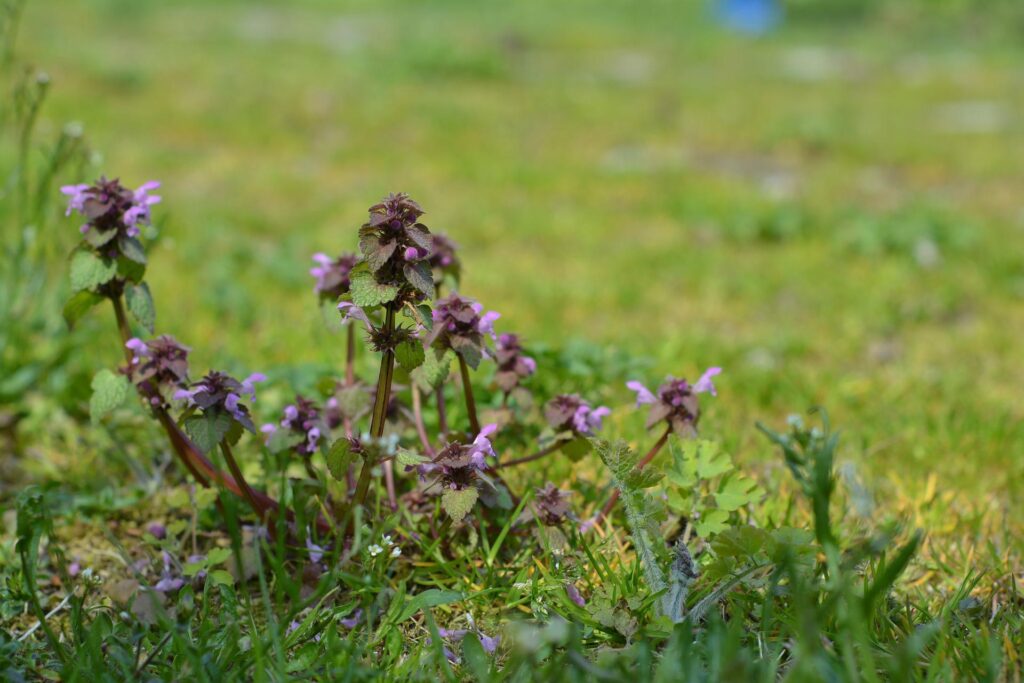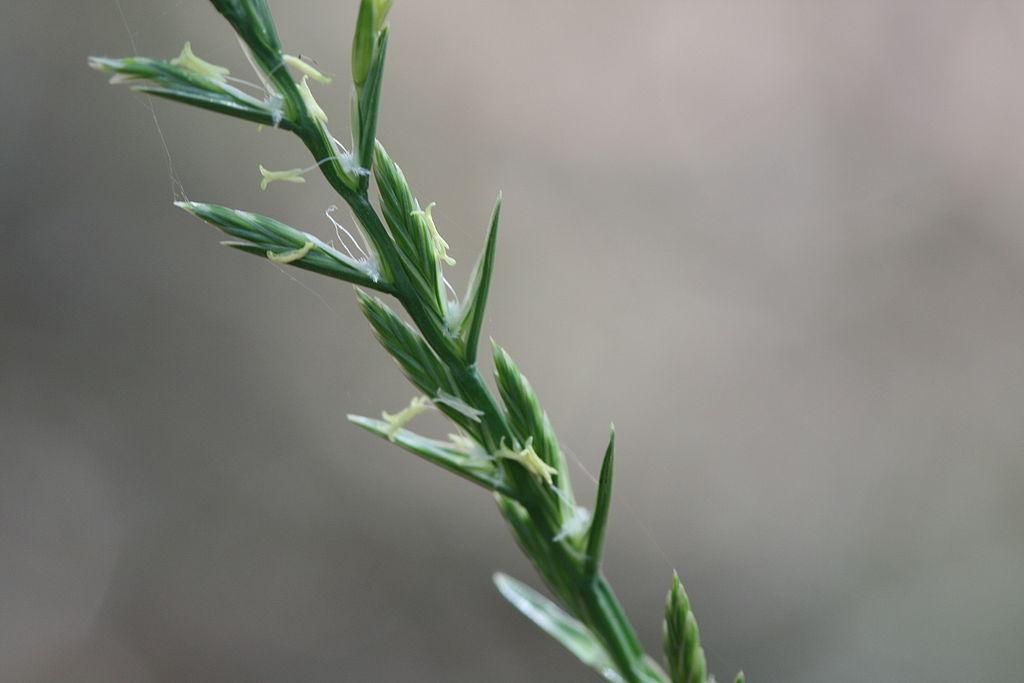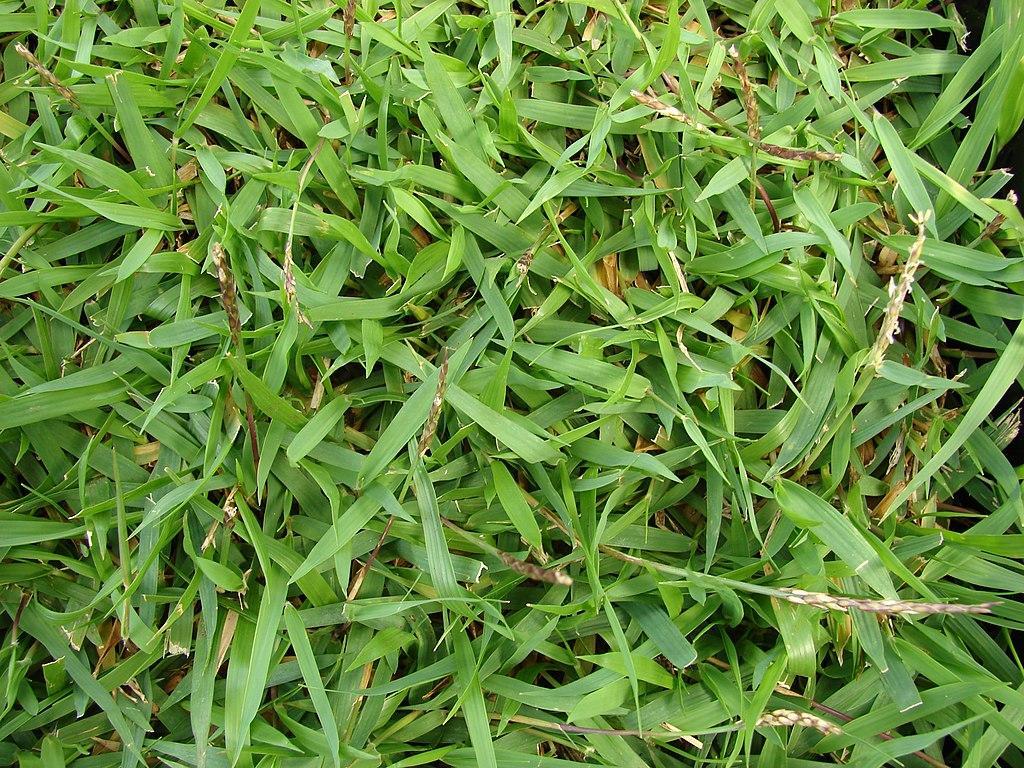If you have a weedy lawn, you are not alone. It happens to most of us! Anyone involved in lawn care knows how easily the weeds can spread. Weeds are opportunistic creatures. They will quickly claim any bare spots on your lawn, and once weeds take hold of your yard, it is nearly impossible to kill weeds completely. No matter how much and how many weed killers you use, some weed seeds always manage to survive. In this article, let’s talk about overseeding lawn with weeds.

Planting new grass on an existing lawn can suppress weed growth and ensure a thicker lawn.
If not taken care of in time, these unsightly weeds can quickly take over the entire lawn. However, do not worry! You do not have to declare your neglected yard a total failure. In most cases, a fix as simple as overseeding your lawn (spreading grass seed on an existing lawn) can prevent it from becoming the neighborhood’s eyesore.
So, let’s go ahead and discuss some of the frequently asked questions about the overseeding process. For instance, how can you properly overseed your lawn? Before you plant grass seed on a weedy lawn, should you use a weed killer? And can grass seeds grow and thrive on a weedy lawn? Happy Reading!
How Do You Overseed A Lawn Full Of Weeds?
Weeds like to have their own space. So if there are any bare spots on your lawn, weeds will fill them up sooner or later. Overseeding your yard is one of the best strategies to fix a patchy turf and stop new weeds from taking over your beloved lawns.
It is a time-saving and cost-saving weedy yard solution that only requires the addition of new grass to get a lush green, beautiful yard. Here’s how you can overseed a weedy yard correctly:
1. Getting Rid Of Weeds
The first thing you need to do while overseeding a weedy yard is to remove all the existing weeds from it. It is because weeds will aggressively compete with grass plants for space, water, and nutrients. Weed removal can be performed in two ways: hand pulling or chemical herbicides.
In small lawns with few weeds, simple hand pulling is the best solution. It can also save you from the harmful effects of chemical herbicides. However, in large areas or lawns which are mostly weeds, you will need to use a chemical herbicide.
We suggest you use a specific herbicide after identifying the weeds you are dealing with. This will make the weed removal process targeted and more effective. Also, apply the herbicide as early as possible before you plant grass seed in your yard.
2. Mowing The Lawn
Since many weeds spread via seed heads, we suggest you set the mowing deck as low as possible. It will ensure that any weed plant left in the yard gets taken out.
In addition, lowering the mowing height will scalp the yard to a degree, and scalping can increase seed-to-soil contact. Improved seed-to-soil contact, in turn, ensures a higher rate of seed germination.
In our experience, mowing the yard just before a rainy week also helps to keep the yard soil wet. Moist soil also makes the process of mowing more effortless and more effective.
3. Removing Grass Clippings
Usually, most lawn owners and gardening experts suggest that you leave the grass clipping on the soil surface after mowing your lawn. It is because the grass clippings decompose quickly and return essential organic materials to the soil. This can give grass seeds a head start, and they will grow faster and better.
However, when mowing a weedy lawn, you should not leave the grass clippings behind. It is because hidden among these grass clippings can also be the seed heads of weeds. These can germinate, giving rise to new weeds and trashing all your efforts to remove weeds from the lawn.
4. Dethatching The Yard
A thatched lawn can be problematic if you are going to plant seeds in it. Thatch is the layer of dead plant materials that can and will buildup overtime on a lawn surface.
When it is around an inch thick, it can prevent sunlight, water, and air from reaching the ground. This can be particularly detrimental for the grass seedlings.
You can use a dethatcher to break down thick parts of the thatch all over your lawn. The collected thatch can be used as compost after processing. You can use a power rake to remove thatch and loosen the soil for large areas.
5. Aerating The Yard
If you are overseeding a yard with compacted soil weeds such as nettle, chickweed, knotweed, mustard, morning glory, and dandelion, the soil needs aeration. Aeration can improve turf quality and boost new grass plants’ growth.
Aerating the yard permits essential nutrients, water, sunlight, and oxygen to penetrate and reach the root system of new or existing grass.
This will encourage the development of a deep and robust root system, resulting in a lush green lawn that is better able to fend off unwelcomed weeds and grasses in the future.
6. Spreading New Grass Seed
The next step is spreading the grass seeds over the surface of the yard. Depending on your requirements and the type of grass that you will use in the yard, you can choose between a drop spreader and a broadcast spreader.
These machines will ensure that you spread the seeds evenly and reduce the chances of a patchy turf in the future.
However, if the area is small, you can also spread the grass seed using your hands. If you are applying the seeds using your hands, we recommend you mix the seeds with sand. The sand will help with the even distribution of the seeds.
7. Watering & Fertilizing The Yard
Once you are done spreading the seeds and raking the yard. It is time to water the new seeds. You will need to keep the yard moist as seeds need that in order to germinate.
However, do not use a heavy sprinkler to water the yard. It is because the seeds can quickly erode with the moving water. Also, new grass plants do not have strong enough roots to hold them in the ground.
We also suggest that you get a soil test. Many weeds grow in poor soils where grass cannot take hold. By testing the soil, you will be able to figure out which fertilizer you need to add o your yard to promote healthy grass growth.
RELATED: Spiky Weeds That Can Ruin Garden Beds (And How To Get Rid Of Them?)
Controlling Weeds After Overseeding
Sometimes even after overseeding a lawn, weeds can sprout out with the new grass. To reduce the chances of such a scenario, buy only the highest quality seeds which do not contain any weed seeds. Also, do not use herbicides to kill the weeds in new grass. It can kill the newly sprouting grass plants.
Moreover, do not use any heavy machinery to remove weeds from the ground in a new lawn. It can also damage the newly sprouting grass. Instead, use your hands to pull out any weeds you see and wait for the yard to establish before using a chemical herbicide.
Frequently Asked Questions (FAQs)
Do I need to kill the weeds before overseeding?
Overseeding is most effective when you have a weed-free lawn. It is because new grass seedlings on their own cannot compete with established weeds. Existing weeds compete with the new grass seed for water, space, and soil nutrients. It becomes challenging to grow new seeds when large weeds already cover every square inch of the lawn.
So, if you want healthy grass and a lush lawn, give the new seedlings a headstart and remove weeds from the existing lawn. If there are only a few weeds on your lawn, you can simply uproot them with your hands. However, you might need to use chemical weed killers to kill weeds in a large area or when too many weeds are in your yard.
What Is The Best Time To Overseed A Weedy Lawn?
Overseeding your lawn at the right time can reduce weed competition and boost new grass growth. The best time to overseed your lawn depends mainly on the grass type you will use to fill up the weedy yard. For instance, warm-season grasses such as Bermuda grass, Centipede, and Zoysia grass should be overseeded in early spring or early summer. However, cool-season grasses such as Fescue, Ryegrass, and Kentucky Bluegrass thrive the best when you overseed your lawn in the fall. For instance, between mid-August and mid-September.
Overseeding in fall also works best against annual weeds. It is because most annual weeds tend to spread and thrive during the middle or late summer. So, when the fall starts, most weeds have already surpassed their peak growing season. All in all, with the right grass seed and timely weed control, you can turn an overseeded lawn into a healthy lawn.
RELATED: What Is The Best Way To Kill Weeds Permanently? A Simple & Easy Guide

Bermuda grass: A warm-season grass.

Ryegrass: A cool-season grass.
How can I prevent weeds when planting grass?
Whether planting new grass or overseeding the existing grass, you can take a number of measures to stop and discourage new weed growth. One way of keeping weeds from entering your lawn is to use the highest quality grass seed. The newly spread grass seed can also be covered with mulch to prevent weeds from growing and spreading.
If you still see a few weeds popping up here and there on your lawn, remove weeds with your hands. Do not use a weed killer on new grass seedlings. Keeping the soil moist ensures healthy grass growth. A healthy grass on its own is a strong defense against weeds.
Is there any grass seed that kills weeds?

Zoysia grass: A popular choice for weed control.
While overseeding with certain grasses can choke existing weeds in a yard, grass seeds on their own cannot eliminate or kill weeds. Nonetheless, Zoysia grass is very popular among lawn owners for weed control. It forms a thick mat that chokes out most of the weeds on the lawn when fully established.
Will overseeding choke out weeds?
On its own, overseeding a weedy lawn will not choke out weeds. However, with a proper lawn care plan, overseeding will create a thicker turf, which can choke out most of the existing weeds in a yard. Also, a dense turf on its own is an excellent defense against new weeds.
RELATED: Garden Weeds With Pink Flowers (And How To Get Rid Of Them?)
What to do when your yard is mostly weeds?
Identify the weeds that are present on your lawn. Once you have identified the weeds, the next thing you need to do is to choose the proper herbicide. Do not choose a non-specific herbicide as it can also harm the desirable plants in your yard. Next, apply the herbicide and make sure that you follow all the guidelines of herbicide use as set by the manufacturer.
Once the weeds are dead, use a power rake to remove as many weeds as possible from the soil surface. Then, aerate your lawn and fertilize the soil using a lawn spreader. Remove thatch if needed and lay down the new grass seed. Water lightly over the next few days to keep the soil wet but not sopping moist. Finally, ensure proper lawn care to stop weeds from spreading again.
Can I overseed after using a weed and feed product?
We do not recommend overseeding a lawn after using a weed and feed product. Such products contain compounds that can inhibit the growth of both weeds and new grass. You should wait at least six weeks before planting new grass seed in a lawn treated with a weed and feed fertilizer.
Sources for Further Reading
- Overseeding athletic fields and lawns for ecological control of weeds | Turfgrass and Landscape Weed ID. (2022). Retrieved 23 April 2022, from http://turfweeds.cals.cornell.edu/overseeding
- Lawn Aeration and Overseeding. (2020). Retrieved 23 April 2022, from https://extension.illinois.edu/blogs/good-growing/2020-09-10-lawn-aeration-and-overseeding
- Overseeding a Lawn | Horticulture and Home Pest News. (2022). Retrieved 23 April 2022, from https://hortnews.extension.iastate.edu/2016/07-29/overseeding.html
Now that you know about overseeding lawn with weeds, make sure to check out our other articles:
How To Use a 2,4-D Lawn Weed Killer To Control Weeds? (And Is It Safe?)
What Is Digging Holes In Your Lawn? Causes and Solutions
Pros And Cons of Using Straw To Cover Grass Seed In A Newly Seeded Lawn







